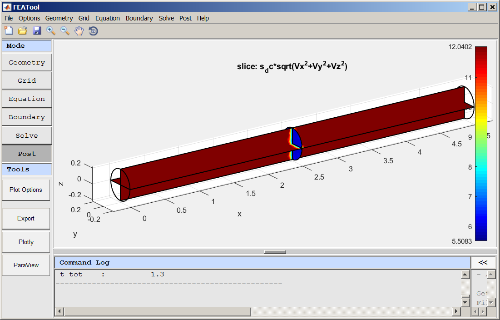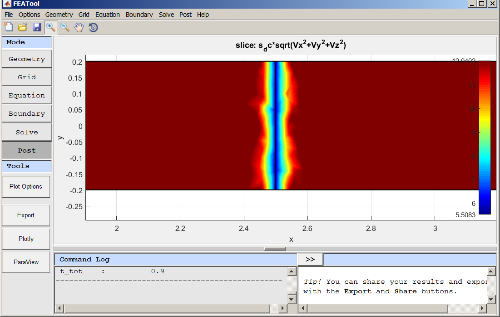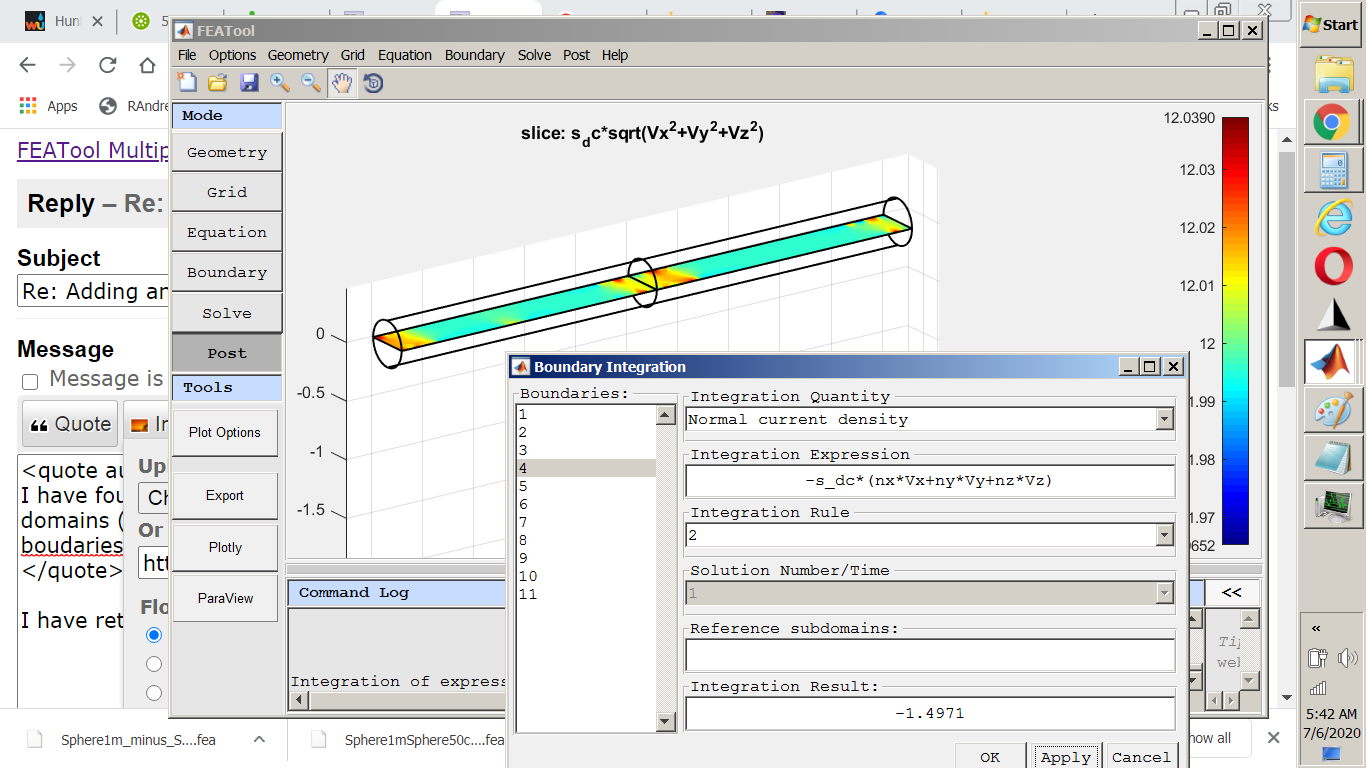Adding an interior boundary by duplication and subtraction
|
In another thread ( http://forum.featool.com/Export-of-STEP-geometry-to-Gmsh-cut-with-plane-and-re-import-STEP-tp423p426.html )
I am trying to use this technique to place a surface/cut-plane/boundary in the middle of a rod (cylinder) perpendicular to the longitudinal axis. Conductivity of both sub-domain halves is set to that of copper, the boundary condition created by this technique is set to "Continuity", and 1 microvolt is placed across the ends of the rod. All seems well until I post process the result which shows an unexpected reduction in current density at the added boundary/surface:  ...zooming in  From file: cylinderSlicedSolvedWeakMiddle.fea Here is the result of a problem similar in all respects except for the added boundary:  From file: cylinderUnsliced.fea Did I err when generating the slice? I can try again and save a construction script if there is not enough information in the .fea file. Kind regards, -Randal |
Re: Adding an interior boundary by duplication and subtraction
|
Administrator
|
This is due to the gradient recovery/reconstruction technique which is performed on a per subdomain basis (due to potential discontinuities between subdomains) which means that internal boundaries will effectively be seen and treated as external ones. Gradient recovery is also expected to be less/the least accurate along boundaries as there is only information from one side available there. However, note that gradient recovery is only used for postprocessing and visualization purposes (not computations such as boundary integration). I will see if I can eventually add some corrections or improve it/change to a more accruate algortihm, but if you for these cases turn off the "Postprocessing Settings..." > "Gradient Smoothing" option in the "Post" menu it should look more as would be expected when visualizing expressions involving gradients of dependent variables.
|
Re: Adding an interior boundary by duplication and subtraction
|
Administrator
|
In reply to this post by randress
I have found an issue that will help with gradient recovery on boundaries for geometries multiple sub-domains (too aggressive caching of matrices) and will issue an update eventually (recovered gradients on boudaries are in general not as accurate though as there is only half the amount of information to use). In the meantime turing off gradient recovery/smoothing will give essentially the same result in this case, and as I pointed out gradient recovery is not used in computations (only for visualization purposes).
|
|
In reply to this post by Precise Simulation
Thanks for the work-around. It works nicely. Current flow at the manufactured boundary calculated by the integration is as expected ~1.5A. Kind regards, Randal |
|
In reply to this post by Precise Simulation
I have retested with 1.12.4 (build 187) and as you can the problem has been corrected.  The integration of the current density over the generated "slice" in the middle is very near the theoretical/analytical value of 1.5 Amps. Thanks! -Randal |
«
Return to Basic Use
|
1 view|%1 views
| Free forum by Nabble | Edit this page |

